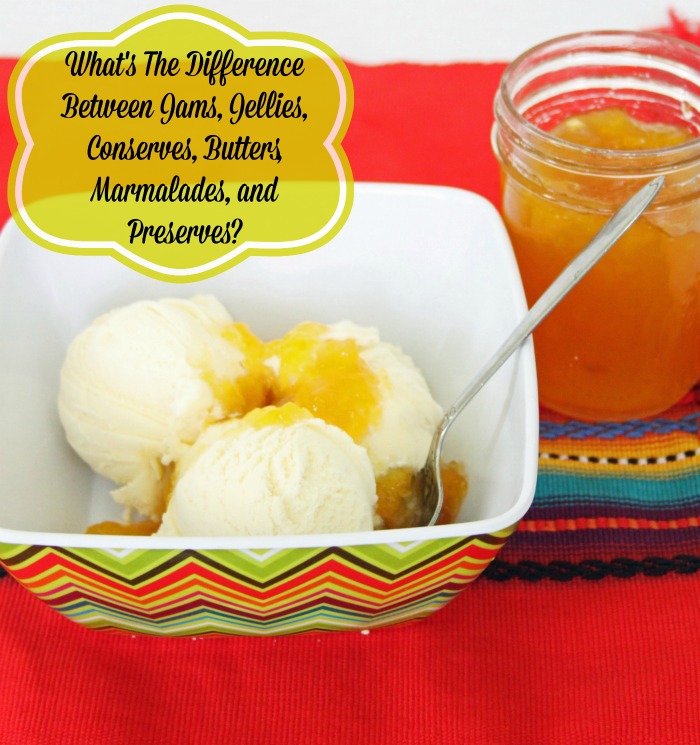I can’t believe it’s canning season already! When my mom taught me canning many years ago, one of the most overwhelming things was understanding the differences between jams, jellies, conserves, butters, marmalade, and preserves. All I wanted to do was make a batch of yummy, sweet fruit to spread on my toast and I had to dig through thousands of recipes that I wasn’t sure were exactly what I needed.

So… What’s The Difference Between Jams, Jellies, Conserves, Butters, Marmalade, and Preserves? Learning the basics of each type of recipe will help you choose exactly what you need.
Jellies: A jelly is made by straining the juice from fruits. It is prepared in a manner that keeps the juice clear. It is thick enough to hold it’s shape, but still spreads easily.
Marmalade: A marmalade is a jelly that has pieces of crushed fruit in it. It is cooked rapidly to the jelling point in a manner similar to jam.
Jam: Jams are made by cooking fruits with sugar and crushing them with a spoon. The mixture will be firm, but spreadable. Jams can be made from a single fruit or a combination of fruits.
Conserves: A conserve is very similar to a jam, but it has two or more fruits, raisins, or nuts. If you are using nuts, they can only be added during the last five minute of cooking.
Butter: A fruit butter is made by cooking the pulp of fruits very slowly until it will mound on a spoon.
Preserves: Chopped fruits are preserved with sugar. It is shiny like a jelly, but consistency will range from honey-like to jelly-like.
When preparing any of the above, you must follow a recipe very carefully. You cannot double batches, as the consistency will change. Some recipes will rely on sugar alone to gel, others will require an additive, such as pectin.
You can add spices and alcohol based flavorings to personalize your soft spreads. Spices may be added at any time, but you must only use alcohol based flavorings after the mixture has cooked and been removed from heat.
If you’re in a situation similar to the one I was in, my best advice is not to fret and remember that it all tastes wonderful on toast!

 Follow
Follow